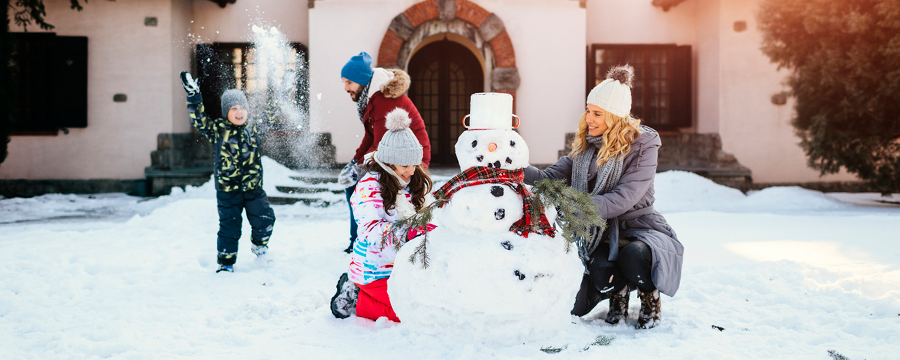
Taking proper precautions against winter conditions is an important step for homeowners to take. Not only will you be able to enjoy the snow with your loved ones, but you’ll also have the peace of mind knowing your home is protected from any disasters that winter may throw your way.
Check off these tasks to help prepare yourself — and your house — for winter.
- Inspect the Furnace – Arrange an appointment for a professional to perform a routine check on your furnace to ensure that it’s operational, safe, and energy-efficient. If your furnace has a filter, make sure you’re changing them out monthly.
- Check the Exterior Doors and Windows – Be sure to inspect the exterior doors and windows for entry points that could allow cold air to enter into your home. By replacing worn weather stripping and applying caulk to gaps around doors and windows, it can help keep drafts to a minimum.
- Avoid Leaks and Ice Dams – Cleaning out your gutters so that water doesn’t back up against the house and replacing missing or loose shingles on the roof can help prevent leaks and ice dams from forming. Also, adding extensions to downspouts is a great way to divert water away from the house. Disconnect your water hoses from outside of your home.
- Get the Fireplace Ready – And this precaution isn’t just for when Santa comes to town. If it’s been awhile since you’ve cleaned your chimney, it might be a good time to call a chimney sweep to come remove any soot and creosote that’s been building up. Having a clean chimney can help prevent possible fires and carbon monoxide.
- Buy Winter Tools and Supplies – The last thing you need during snowfall is to find out you forgot to buy ice-melt or replace the broken snow shovel from last year. Make sure you do an inventory on the tools and supplies you’ll need during the winter, so you can tackle the snow without running into any setbacks.
- Prevent Pipes from Freezing – This may sound like a no-brainer but the best way to keep pipes from freezing is to keep them warm enough to stay above the freezing point. Some tips include sealing gaps around holes where pipes run through, applying heat tape, adding extra insulation, and keeping the room temperature above 50 degrees. Learn more here.
- Prepare an Emergency Kit – If the power goes out, you might not know how long it’ll take for the utility company to fix the outage; so storing away an emergency kit could come in handy. Suggested items include: indoor candles with matches or a lighter, flashlights, battery backup for cellphones, blankets, a first-aid kit, bottled water, and nonperishable food supplies. Oh, and don’t forget about pet food if you have a furry friend!
- Review your Homeowners Insurance – During the holidays, you’re at a greater risk of frozen pipes or your pipes bursting. Typically, this happens when you’re away visiting family for an extended period of time. Have a conversation with your agent about your Homeowners Insurance to make sure you are covered properly.
Insurance services are not deposits or obligations of the bank, are not insured by the FDIC or any governmental agency, and are not guaranteed.






